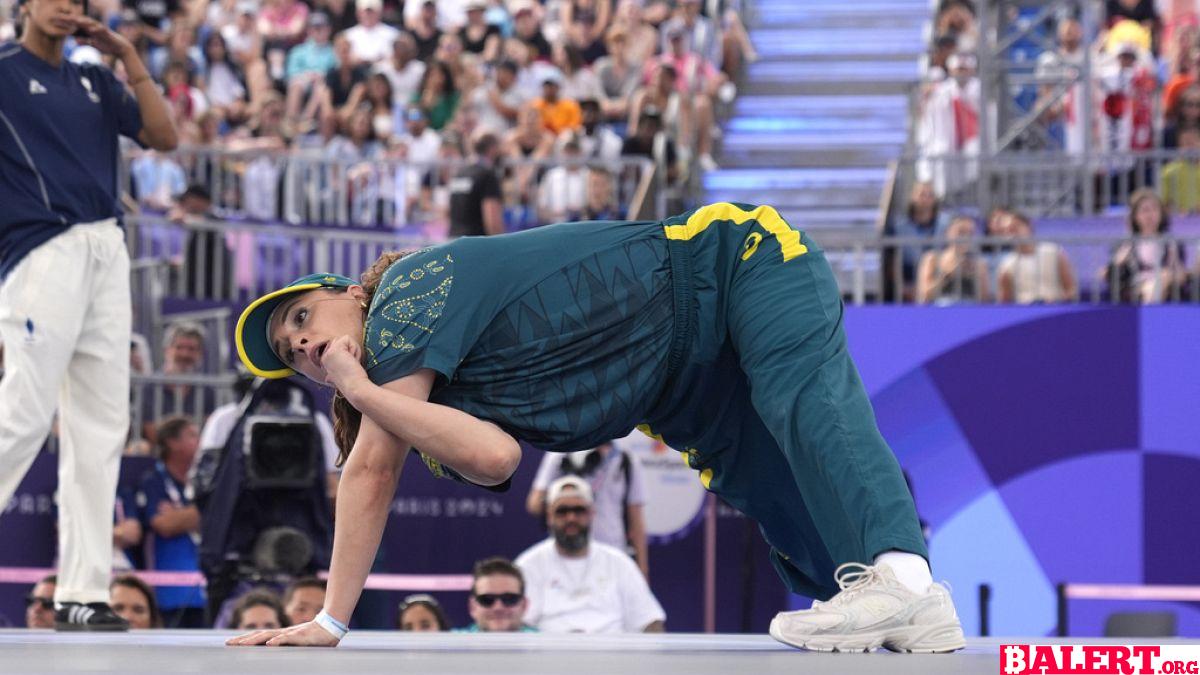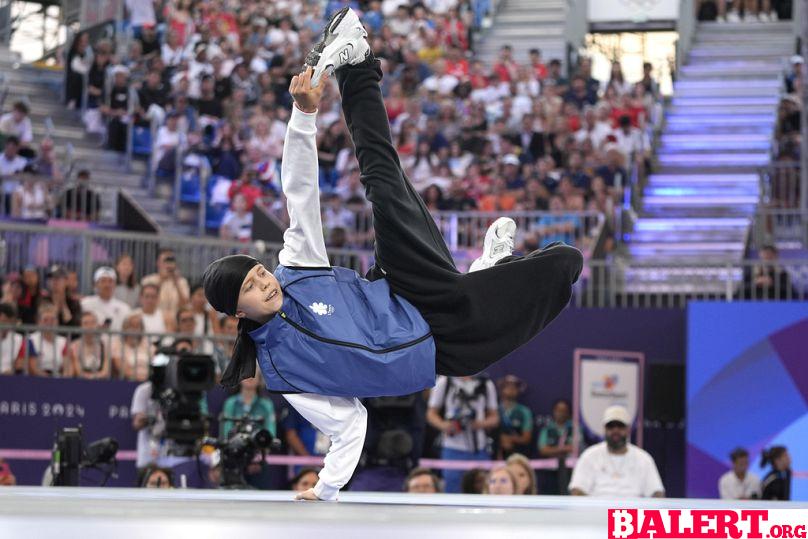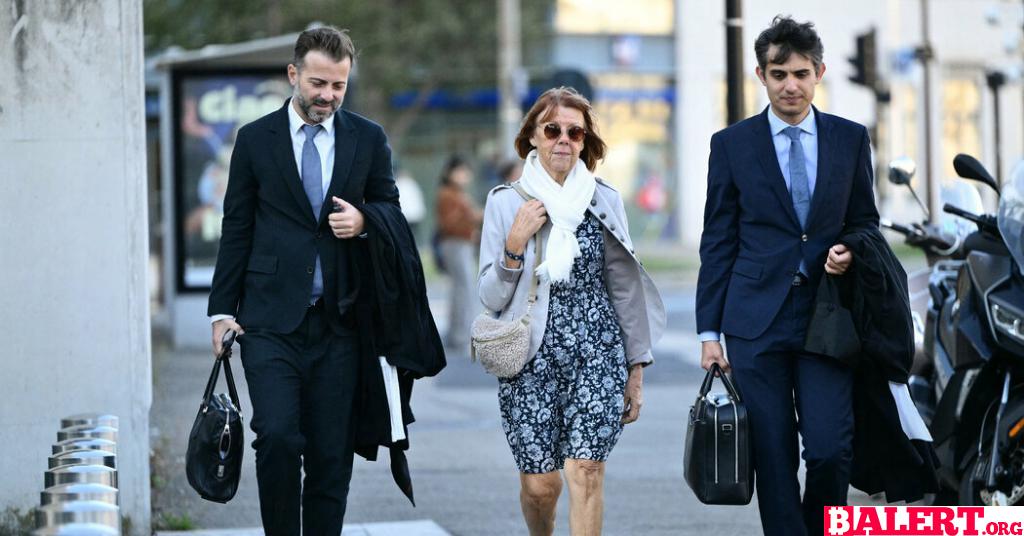World
Breaking’s Olympic Debut: Cultural Controversies and Performances
Explore the cultural controversies and stunning performances surrounding Breaking’s Olympic debut. Delve into the impact of this dynamic dance style on the global stage and the reactions it has sparked across diverse communities.

Breaking’s Olympic Debut: A Mixed Bag of Moments
The Olympic debut of breaking has sparked a lively discussion among viewers, particularly around its authenticity as a representation of hip-hop culture. Highlights from the event included moments that raised eyebrows, such as an Australian b-girl showcasing a meme-worthy “kangaroo” dance move and a Lithuanian athlete donning a durag while claiming silver.
Rachael Gunn, known as “b-girl Raygun,” is a 36-year-old professor from Sydney, Australia, who quickly gained internet fame, albeit not for her Olympic prowess. She exited the round-robin stage without scoring a single point, and her unique, unconventional moves appeared out of sync with the established skill level of her competitors. Gunn’s routine featured a distinctive pose where she raised one leg while standing, leaning back with her arms bent toward her ears. In another part of her performance, she laid on her side, reaching for her toes, and executed a flip followed by the same pose, which became known as the “kangaroo.”
With a PhD in cultural studies, Gunn’s LinkedIn profile emphasizes her interest in the cultural politics of breaking. She stated, “I was never going to beat these girls on what they do best — their power moves. What I bring is creativity.” Clips of her performance went viral on TikTok, but many viewers expressed discomfort at her portrayal of hip-hop and breaking culture on such a prestigious global stage. One user on X remarked, “It’s almost like they are mocking the genre.”
Controversies and Cultural Significance

Amidst the performances, many Black viewers voiced their concerns regarding Lithuania’s silver medalist, b-girl Nicka, whose real name is Dominika Banevič. She wore a durag during her battles, which sparked conversations about cultural appropriation and the historical significance of the garment. Originally worn by enslaved Africans to manage their hair while working, durags have evolved into a symbol of Black pride since the 1960s and 1970s, and they became an iconic part of hip-hop fashion in the late 20th century.
Banevič, a 17-year-old dancer, ultimately secured the silver medal after a fierce final against Japan’s b-girl Ami (Ami Yuasa). In reflecting on her journey, Banevič expressed gratitude towards the pioneers of breaking from the 1970s in the Bronx, referring to them as the OGs, or “original gangsters.” She stated, “It’s a huge responsibility to represent and raise the bar every time for breaking because they did an amazing job. Big respect for the OGs and the pioneers that invented all those moves. Without them, it wouldn’t be possible.”
Concerns Over the Future of Breaking
According to Zack Slusser, vice president of Breaking for Gold USA and USA Dance, the slips during the performance may have alienated too many new viewers and hindered the anticipated positive reception of breaking’s Olympic premiere. He remarked, “We need to change the narrative from yesterday’s first impression of breaking as an Olympic sport. There were significant organizational and governance shortcomings that could have been easily reconciled but, unfortunately, negatively impacted breaking’s first touching point to a new global audience.”
The challenge faced by Olympic organizers was to present breaking and hip-hop culture to a broad audience, including those skeptical about the dance’s inclusion in the Olympic roster. Many feared that the essence of the subculture would be diluted by commercial interests and rigid judging structures, which could undermine the spirit of breaking that has always thrived within local communities, often centered around street battles, cyphers, and block parties. Hip-hop originated as a youth movement in Black and brown communities in the Bronx, serving as a means of expression and empowerment during a time when these young people were often marginalized and labeled as lost or lawless by political figures in New York.
World
Dominique Pelicot Testifies in Harrowing Rape Trial
Join us as Dominique Pelicot courageously testifies in a harrowing rape trial, shedding light on the complexities of trauma and justice. Her powerful story raises crucial questions about the legal system and the importance of support for survivors.

Dominique Pelicot Takes the Stand in Shocking Rape Trial
In a courtroom drama that has captivated France and garnered international attention, Dominique Pelicot, the man at the center of a harrowing rape trial, finally addressed the court. With tears streaming down his face, he recounted how his wife had been instrumental in helping him cope with a tumultuous past marked by trauma. He revealed that he had endured a sexual assault at the tender age of nine while hospitalized, and he also witnessed a gang rape during his teenage years while working as an apprentice electrician on a construction site.
“She didn’t deserve this, I acknowledge that,” Mr. Pelicot stated, his voice barely audible as he struggled to convey his emotions. The gravity of the situation weighed heavily on him, and the courtroom fell silent, straining to catch his every word.
Now 71 years old, Mr. Pelicot faces serious allegations of drugging his wife, Gisèle Pelicot, whom he has been married to for half a century, over a span of nearly ten years. Prosecutors contend that he used drugs to render her comatose, allowing him to rape her repeatedly. Furthermore, authorities allege that he went so far as to invite numerous men into their home, facilitating a nightmarish scenario where they, too, engaged in the assault of his wife.
Overall, 51 men, including Mr. Pelicot, are on trial concurrently, primarily facing charges related to the aggravated rape of Ms. Pelicot. Among them, one individual has already pleaded guilty to similar crimes, admitting to drugging his own wife to assault her and inviting Mr. Pelicot to partake in the horrific act while she was incapacitated.
Mr. Pelicot’s unexpected testimony came after a tumultuous start to the trial. Just a week in, he was stricken with severe health issues that forced him to miss four consecutive days in court. The head judge ultimately decided to postpone proceedings, as Mr. Pelicot was diagnosed with kidney stones, a kidney infection, and prostate complications, adding yet another layer of complexity to this already harrowing case.
World
Meta Bans Russian State Media Outlets from Social Media Platforms
Explore the implications of Meta’s decision to ban Russian state media outlets from its social media platforms. Understand the impact on information dissemination and the ongoing battle against misinformation in the digital landscape.

Meta Imposes Global Ban on Russian State Media Outlets
In a significant move, Meta Platforms, Inc., the parent company of Facebook, has announced the prohibition of Russian state media outlets, including RT (Russia Today) and Rossiya Segodnya, from all its social media platforms. The decision stems from the company’s concerns regarding the deceptive strategies employed by these media organizations to execute covert influence operations across the internet.
Meta made this announcement on Monday, emphasizing that the ban will be enforced worldwide across its various platforms, such as Instagram, WhatsApp, and Threads. The rollout of this ban is expected to take place over the coming days.
Statement from Meta
A spokesperson for Meta elaborated on the decision, stating, “After careful consideration, we have expanded our ongoing enforcement actions against Russian state media outlets. As a result, Rossiya Segodnya, RT, and other affiliated entities are now banned from our applications globally due to their involvement in foreign interference activities.”
For further insights into this development, watch the video in the player above.
World
Trump Recalls Alleged Assassination Attempt While Golfing
Explore Donald Trump’s chilling recollection of an alleged assassination attempt he experienced while enjoying a round of golf. Delve into the tense moments and his reflections on safety, fame, and the unpredictability of public life.

In a recent interview on the social media platform X, Republican presidential nominee Donald Trump recounted a harrowing incident he claims to have experienced while playing golf. Trump described how, during a peaceful Sunday morning round with friends, the tranquility of the day was abruptly shattered by the sound of gunfire in the air.
“It was a beautiful day, everything was just perfect,” Trump reflected. “Then all of a sudden, we heard shots being fired—probably around four or five in total.” He went on to explain that a Secret Service agent was the first to spot the suspect, who was allegedly armed with an AK-47, a powerful assault rifle.
“The agent saw the barrel of the weapon and immediately took action, returning fire at the barrel and aiming in the direction of the bushes,” Trump detailed. “I would have loved to have sunk that last putt, but we decided it was best to leave the scene promptly.”
Trump expressed his gratitude towards the agents and a vigilant civilian who aided in tracking down the suspect, who was eventually apprehended following a high-speed chase.
Suspect Faces Multiple Federal Gun Charges
The FBI has identified the suspect as Ryan Wesley Routh, accusing him of targeting Trump during his time at the golf club in West Palm Beach, Florida. According to an FBI report, Routh had allegedly hidden among the hedges of the golf course for an astonishing 12 hours. Authorities discovered an SKS-style assault rifle, a GoPro camera, and a bag of food at the scene.
The 58-year-old Routh is now facing two serious federal gun charges. If convicted on both counts, he could face a combined maximum sentence of 20 years in prison. Notably, neither of the charges is directly related to an assassination attempt. The first charge pertains to possessing a firearm despite a prior felony conviction, which carries a potential 15-year sentence, a fine of $250,000 (€225,000), and three years of supervised release.
The second charge involves possession of a firearm with an obliterated serial number, which could result in a five-year prison term, the same financial penalties, and also three years of supervised release. As the investigation continues, additional charges could be forthcoming.
While the motive behind Routh’s actions remains unclear, his digital footprint reveals strong political affiliations, particularly concerning issues surrounding Ukraine and China. Routh consistently expressed support for Ukraine across various social media platforms, even claiming to have orchestrated a recruitment scheme for international volunteers aiming to assist Ukraine in its fight against Russia’s invasion. This behavior has been denounced by Ukrainian soldiers and members of the International Legion, who disavowed Routh’s actions and motives.
-

 Business5 months ago
Business5 months agoThe Significance of Jackson Hole: A Central Banking Tradition
-

 Tech5 months ago
Tech5 months agoNew Leaks and Features About the Samsung Galaxy S25 Ultra
-

 Business7 months ago
Business7 months agoObituary: Dan Collins
-

 Article7 months ago
Article7 months agoCreative Design Applications Developed with Artificial Intelligence
-

 Business5 months ago
Business5 months agoBhutan’s Strategic Investment in Bitcoin: A New Era for the Himalayan Kingdom
-

 World5 months ago
World5 months agoThierry Breton Resigns: Impact on European Union Leadership
-

 Gaming5 months ago
Gaming5 months agoNew Details and Trailer Released for Dead Rising Deluxe Remaster
-

 Gaming5 months ago
Gaming5 months agoNew Details for Alan Wake 2 and PlayStation 5 Pro Announcement












